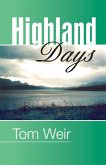In May 1933 Margaret Leigh took over the tenancy of Achnabo farm, in a beautiful corner of the West Highlands overlooking the isle of Skye. In,
Highland Homespun - this unsentimental yet exquisitely written book - she recounts a year of farming life there, from the burning of the land and ploughing in March, through planting and sowing in April to haymaking and harvesting in September. Incidental details - such as a visit to the smithy, the arrival of some new bulls and the annual journey of the cows to the summer shielings - provide fascinating insights into farming life. Local characters and customs feature too, adding another rich dimension to this reflective and poignant memoir of a world now vanished forever.
Dieser Download kann aus rechtlichen Gründen nur mit Rechnungsadresse in A, B, BG, CY, CZ, D, DK, EW, E, FIN, F, GR, H, IRL, I, LT, L, LR, M, NL, PL, P, R, S, SLO, SK ausgeliefert werden.









